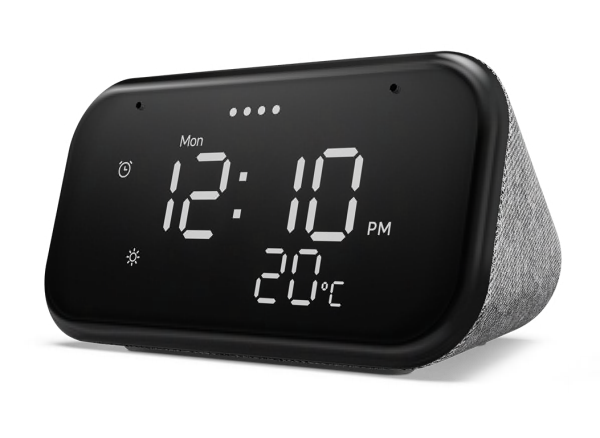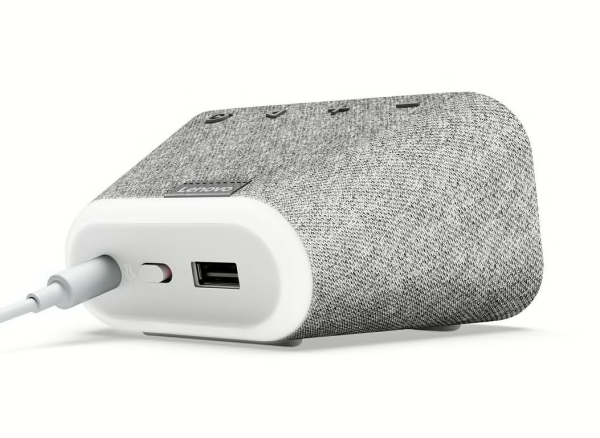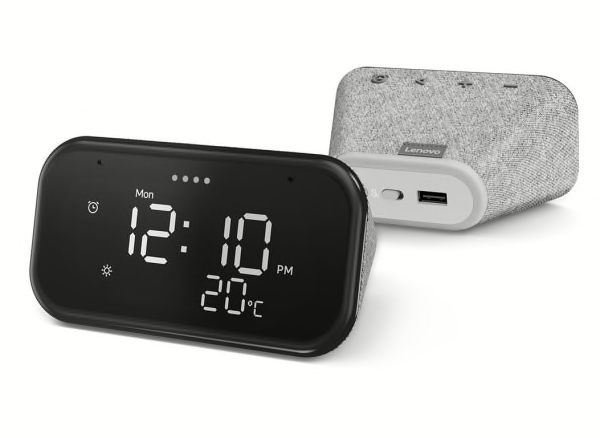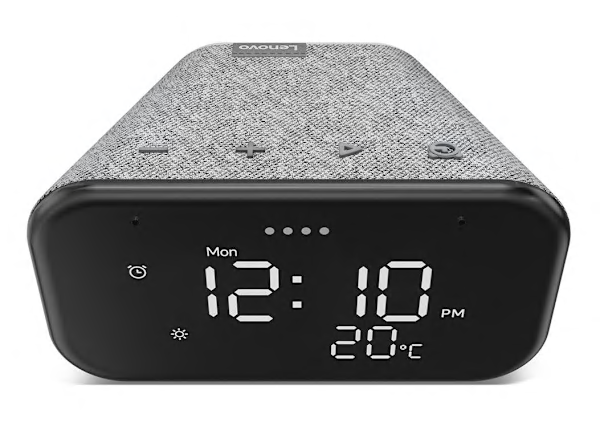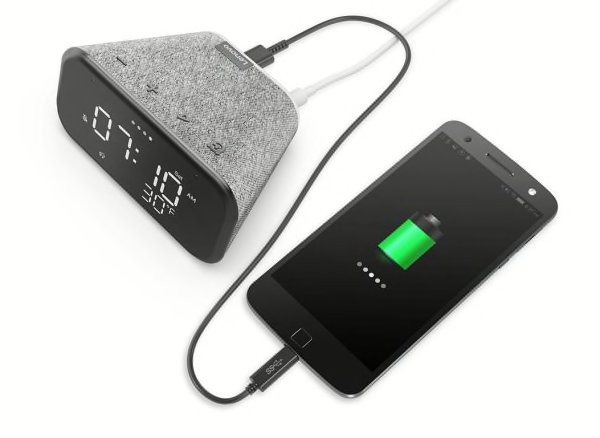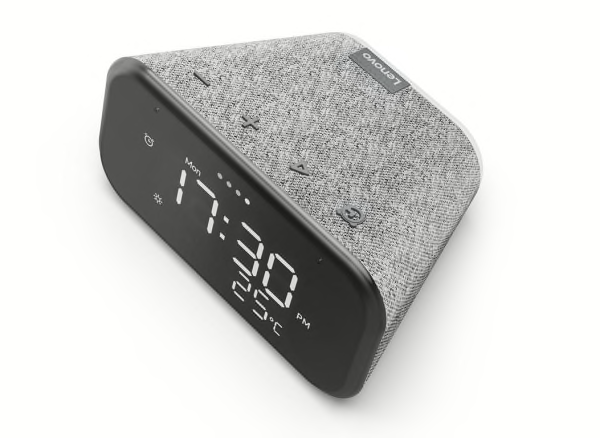Sound QualityThe Lenovo Smart Clock Essential has Fair overall sound quality. What little bass there is has little impact, is subdued, and doesn't go deep. Midrange is thin, telephone-like, grainy, etched, and somewhat hazy and harsh. Treble is fairly extended, but is prominent, smeared, sizzly, and somewhat piercing. Does a so-so job of recovering room ambience and is congested. The speaker is monophonic. There is no significant difference between WiFi and Bluetooth sound quality. Best suited for small rooms and near field listening.
Versatility
Versatility is very good. It's a monophonic speaker, with multi-room support. Wireless: WiFi supports dual-band and this unit has Bluetooth but lacks Bluetooth output to another speaker and lacks speakerphone functionality. Communications: Has support for calling but lacks for texting and messaging. Digital Assistant Muting: Has a dedicated switch to disable the digital assistant by muting its microphones. Audio Connections: Lacks analog audio input and outputs. Audio Tailoring: Has user adjustable treble and bass controls. OS Support: Android and iOS. Other connections and features: Has a USB device port. Display: Has an information display. Streaming by voice command: Supports voice command of many common streaming services such as Apple Music, Google-Play Music, Pandora, Spotify, Tune-In and iHeart Radio. Voice ID: Supports voice identity - a feature which allows the account holder with their "voice print" to access personal information.
Ease of Use
Overall ease of use of the Lenovo Smart Clock Essential is very good. Wireless setup: Setup requires an app downloaded to a device or device connection, easy and intuitive - need instructions (may be included in app), may or may not involve inputting WiFi network password, and account setups. Console controls: The volume controls are labeled (+/-) on console device. Volume may also be controlled via a natural language command. The display has non-persistent graphical position. Audio mute: Unlabeled - well placed - with indication when it is engaged. Microphone mute: Poorly/Ambiguously marked , not well placed (behind, under) with clear indication when it is engaged. Source selections: Requires app to be installed, app installation is straight forward. Once app is installed switching between inputs requires selecting the -cast- icon in a 3rd party supported app. Fairly intuitive but subject to 3rd Party implementation of cast selection. App remote: Volume control not available until after content is first played. Mute: (Remote) Dedicated control but the marking is not the most obvious, clear indication when it is engaged and mutes line in if it exists. Voice transport controls: Natural language control of transport (Play/Pause/Skip/Mute), volume controls and source selection was easy and intuitive.

















